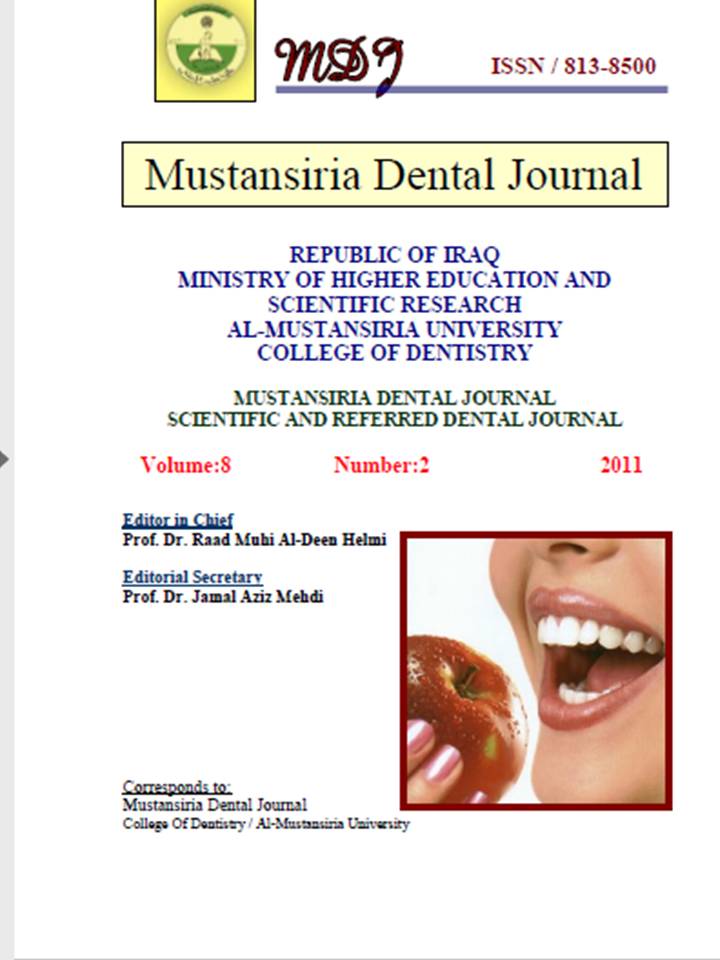Factors associated with pericoronitis among subjects with impacted third molars teeth
DOI:
https://doi.org/10.32828/mdj.v8i2.326Keywords:
Key words: third molar, impaction, pericoronitis.Abstract
The removal of impacted third molars is one of the most common procedures in
oral surgery. This is because third molars show high incidence of impaction and are
often associated with pain due to pericoronitis.
Assess the reasons for extraction and describe the type of tooth angulations and
state of eruption. Determine the association of selected factors with pericoronitis as a
reason for extraction.
A total of 256 patients having symptomatic third molars and referred to the oral
surgery department for consultation, diagnosis and treatment of partially or
completely impacted third molars in the mandible and maxilla were included in the
sample. All these teeth were surgically treated.
the most common cause of surgical extraction of third molars was pericoronitis
(86.7%). The condition occurs mostly in mandible and in the 25-29 years age group.
Horizontal/transverse third molars were more affected by pericoronitis (96.9%)
followed by vertical angulations (91.6%). Pericoronitis encountered more frequently
with complete soft tissue impaction (93.3%).
pericoronitis was the most common cause of third molar extraction. Factors
associated with increased risk of having pericoronitis include: age group 25-29 years,
mandible location, Horizontal / transverse angulation type and complete soft tissue
impactions.

Downloads
Published
Issue
Section
License
The Journal of Mustansiria Dental Journal is an open-access journal that all contents are free of charge. Articles of this journal are licensed under the terms of the Creative Commons Attribution International Public License CC-BY 4.0 (https://creativecommons.org/licenses/by/4.0/legalcode) that licensees are unrestrictly allowed to search, download, share, distribute, print, or link to the full texts of the articles, crawl them for indexing and reproduce any medium of the articles provided that they give the author(s) proper credits (citation). The journal allows the author(s) to retain the copyright of their published article.
Creative Commons-Attribution (BY)








